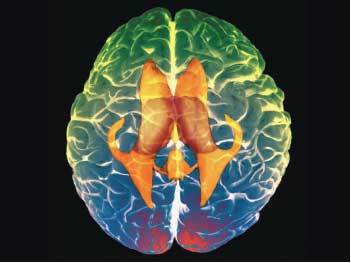WiFi Man
A micro-sensor that could be injected into the brain of those suffering from motor neurone disease and transmit data to a computer is being developed at Birmingham University.In a presentation at the Euro-NanoForum 2005 in Edinburgh, Jon Spratley of Birmingham’s School of Engineering claimed signals that would have previously controlled muscles could be harnessed to operate communications technology such as artificial speech programs, or even the movement of an electronic wheelchair.
Using micro-engineering techniques, Spratley is designing an unpowered passive sensor package that is small enough to be injected using a needle with a diameter of up to 1.5mm, removing the need for an operation.

According to Spratley, by injecting micro-sensors into the motor cortex of the brain, localised and precise data could be gathered. The skull would be used to shield the device from external electromagnetic signals. The sensors would then communicate with a relay station implanted on the outside of the brain, under the skull, which would pass the signals to an external processing unit.
Other systems under investigation include the use of implanted micro-sensors to monitor fracture healing and hip replacements, allowing remote monitoring of patients who have been discharged from hospital to recuperate at home and freeing up hospital beds. If complications occurred, the sensor could alert doctors by computer. Sensors could also be implanted in specific areas to monitor how much of a drug was reaching its target.
The Engineer Online - Message in an implant



0 Comments:
Post a Comment
<< Home